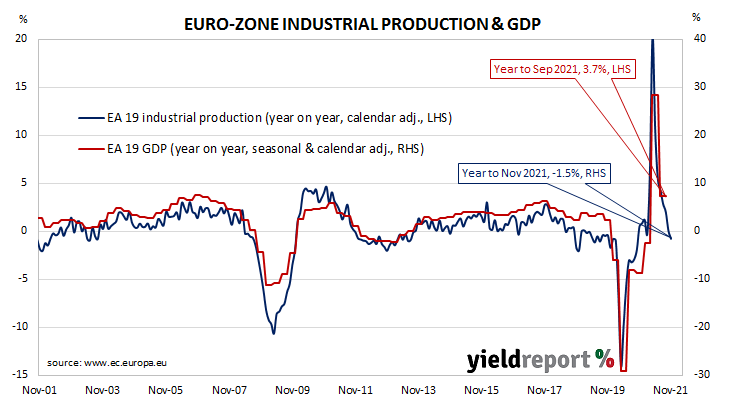Summary: Euro-zone industrial production increases by 2.3% in November; more than 0.3% expected figure; annual growth rate slows to -1.5%; production up in only one of euro-zone’s four largest economies.
Following a recession in 2009/2010 and the debt-crisis which flowed from it, euro-zone industrial production recovered and then reached a peak four years later in 2016. Growth rates then fluctuated for two years before beginning a steady and persistent slowdown from the start of 2018. That decline was transformed into a plunge in March and April of 2020 which then took over a year to claw back. However, production levels have since slid back below those from late 2019.
According to the latest figures released by Eurostat, euro-zone industrial production increased by 2.3% in November on a seasonally-adjusted and calendar-adjusted basis. The rise was considerably larger than the 0.3% increase which had been generally expected and in contrast to October’s 1.3% fall after revisions. However, the calendar-adjusted growth rate on an annual basis slowed from October’s revised rate of 0.2% to -1.5%.
German and French sovereign bond yields did not move on the day. By the close of business, German and French 10-year bond yields had each returned to their starting points at -0.07% and 0.27% respectively.
Industrial production expanded in only one of the euro-zone’s four largest economies. Germany’s production contracted by 0.1% while the growth figures for France and Spain were -0.5% and 0.8% respectively. Italy’s figure was unavailable.


